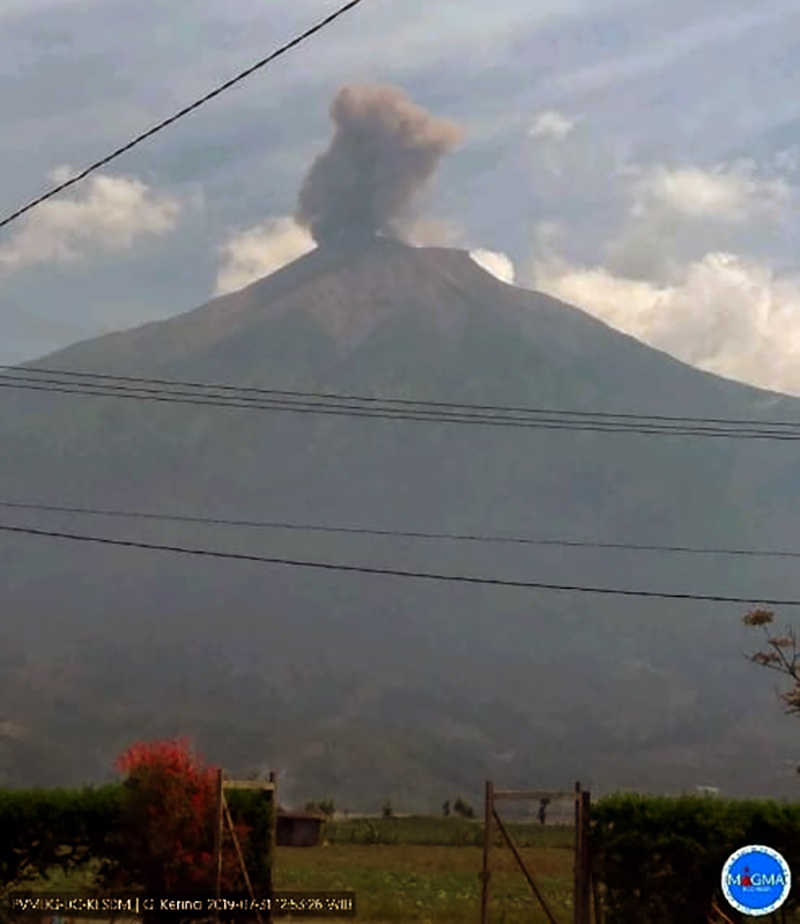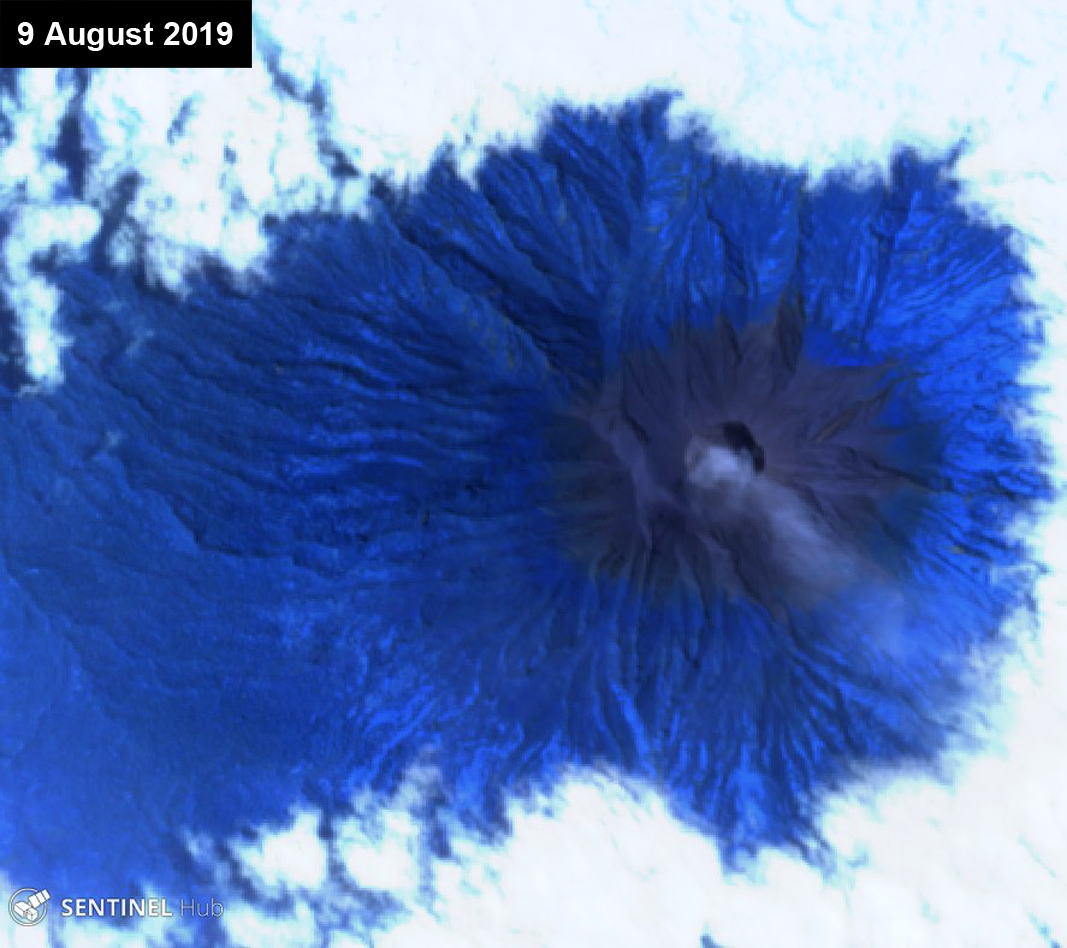Report on Kerinci (Indonesia) — December 2019
Bulletin of the Global Volcanism Network, vol. 44, no. 12 (December 2019)
Managing Editor: Edward Venzke.
Edited by Kadie L. Bennis.
Kerinci (Indonesia) Intermittent gas-and-steam and ash plumes during June-early November 2019
Please cite this report as:
Global Volcanism Program, 2019. Report on Kerinci (Indonesia) (Bennis, K.L., and Venzke, E., eds.). Bulletin of the Global Volcanism Network, 44:12. Smithsonian Institution. https://doi.org/10.5479/si.GVP.BGVN201912-261170
Kerinci
Indonesia
1.697°S, 101.264°E; summit elev. 3800 m
All times are local (unless otherwise noted)
Kerinci, located in Sumatra, Indonesia, is a highly active volcano characterized by explosive eruptions with ash plumes and gas-and-steam emissions. The most recent eruptive episode began in April 2018 and included intermittent explosions with ash plumes. Volcanism continued from June-November 2019 with ongoing intermittent gas-and-steam and ash plumes. The primary source of information for this report comes from Pusat Vulkanologi dan Mitigasi Bencana Geologi (PVMBG, also known as Indonesian Center for Volcanology and Geological Hazard Mitigation, CVGHM), the Darwin Volcanic Ash Advisory Centre (VAAC), and MAGMA Indonesia.
Brown- to gray-colored ash clouds drifting in different directions were reported by PVMBG, the Darwin VAAC, and MAGMA Indonesia between June and early November 2019. Ground observations, satellite imagery, and weather models were used to monitor the plume, which ranged from 4.3 to 4.9 km altitude, or about 500-1,100 m above the summit. On 7 June 2019 at 0604 a gray ash emission rose 800 m above the summit, drifting E, according to a ground observer. An ash plume on 12 July rose to 4 km altitude and drifted SW, as determined by satellite imagery and weather models. An eruption produced a gray ash cloud on 31 July that rose to 4.6 km altitude and drifted NE and E, according to PVMBG and the Darwin VAAC (figure 17). Another ash cloud rose up to 4.3 km altitude on 3 August. On 2 September a possible ash plume rose to a maximum altitude of 4.9 km and drifted WSW, according to the Darwin VAAC advisory.
 |
Figure 17. A gray ash plume at Kerinci rose roughly 800 m above the summit on 31 July 2019 and drifted NE and E. Courtesy of MAGMA Indonesia. |
Brown ash emissions rose to 4.4 km altitude at 1253 on 6 October, drifting WSW. Similar plumes reached 4.6 km altitude twice on 30 October and moved NE, SE, and E at 0614 and WSW at 1721, based on ground observations. On 1-2 November, ground observers saw brown ash emissions rising up to 4.3 km drifting ESE. Between 3 and 5 November the brown ash plumes rose 100-500 m above the summit, according to PVMBG.
Gas emissions continued to be observed through November, as reported by PVMBG and identified in satellite imagery (figure 18). Seismicity that included volcanic earthquakes also continued between June and early November, when the frequency decreased.
Geological Summary. Gunung Kerinci in central Sumatra forms Indonesia's highest volcano and is one of the most active in Sumatra. It is capped by an unvegetated young summit cone that was constructed NE of an older crater remnant. There is a deep 600-m-wide summit crater often partially filled by a small crater lake that lies on the NE crater floor, opposite the SW-rim summit. The massive 13 x 25 km wide volcano towers 2400-3300 m above surrounding plains and is elongated in a N-S direction. Frequently active, Kerinci has been the source of numerous moderate explosive eruptions since its first recorded eruption in 1838.
Information Contacts: Pusat Vulkanologi dan Mitigasi Bencana Geologi (PVMBG, also known as Indonesian Center for Volcanology and Geological Hazard Mitigation, CVGHM), Jalan Diponegoro 57, Bandung 40122, Indonesia (URL: http://www.vsi.esdm.go.id/); Darwin Volcanic Ash Advisory Centre (VAAC), Bureau of Meteorology, Northern Territory Regional Office, PO Box 40050, Casuarina, NT 0811, Australia (URL: http://www.bom.gov.au/info/vaac/); MAGMA Indonesia, Kementerian Energi dan Sumber Daya Mineral (URL: https://magma.vsi.esdm.go.id/); Sentinel Hub Playground (URL: https://www.sentinel-hub.com/explore/sentinel-playground).


